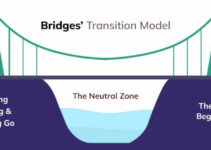Organizational behavior and change management overlap each other in various areas and have some differences with each other. It is significant to keep in mind that organizational behavior impacts the company’s change initiative; that’s why change managers are curious to comprehend its relationship. Today, we’ll discuss organizational behavior and change management; their definitions; how to implement them at the organizational level; and similarities and differences.
What is Organizational Behavior in Change Management?
Organizational behavior in change management is the method of studying and learning the behavior of employees and how they behave in the workplace. Usually, HR professionals study the company’s behavior in-depth; HR and OB have a very close relationship with each other.
Before jumping into the discussion of organizational behavior and change management; it is significant to discuss some of the key elements of OB and they’re as follows;
Employee Behavior in Group Setting
It analyzes how a group of employees connect and interact with the other groups; and their collective behavior as a group or team. Some of their behavioral traits are as follows;
- Passive
- Proactive
- Competitive
- Uncooperative
- Cooperative
Their Sentiments & Motivational Spirit
There are various factors and elements that impact the behavior of employees and workers; their motivation, morale, satisfaction level, and sentiments. What employees experience and observe directly affects their emotions and behavior how they act and behavior in the workplace.
Productivity & Performance
The performance and productivity of employees would outline the behavior of employees in the workplace. Employees’ emotional state, morale, motivation, and satisfaction level are the main factors impacting their performance and productivity in the workplace.
Culture
Every company’s workplace has a unique culture and it has a great connection with their behavioral state. The focus of culture is learning proactively learning, and fostering behavior and attitude of openness to change, new ideas, and learning.
How to Implement Change in Organizational Behavior
Let’s discuss how to implement change in organizational behavior and change management; some of the key elements are as follows;
Continuous Learning
Continuous learning plays a key role for businesses and companies in the economy. Employees and workers need to upgrade their skill sets and expertise due to the evolving digital technology. The culture of learning would promote the behaviors and attitudes of employees to improve, grow, and learn proactively.
Collaboration
If workers and employees are coordinating and collaborating with each other, then it results in the form of positive and product impact on the company.
Tech Know-How
It is highly important to embed tech literacy and fluency in the company’s culture; since we are living in the digital age. Employees and workers have a tech and digital skill set in the tech workplace culture, which is the key to growth and productivity in the digital age.
Change Welcoming Attitude
When employees have a positive and open attitude towards change and openness, then they will support and accept the new change behavioral project. Their support would improve their productivity and performance in the workplace during the change.
Accepting Change
A resilient attitude plays a critical role while implementing the change initiative. If employees and team members have been open and adopting attitudes and behaviors; they would deal with any type of unpredictable changes.
What is Change Management in Organizational Behavior?
Change management in organizational behavior is the strategic approach of executing change both in its internal and external processes. It comprises getting ready, offering support to employees for change, taking necessary steps, and evaluating change processes and activities to ensure successful implementation.
However, organizational change is a difficult and challenging process; it needs coordination and collaboration at different levels of the company. Well-structured and systematic change strategy ensures a successful and smooth transition and avoids all types of disruptions and issues.
Open and effective communication is highly significant for the success of the effective change management program. Employees and team members should comprehend the change process and how they implement it in various stages.
How to Implement Organizational Change Management
Let’s discuss how to implement an organizational change program; some of the main steps are as follows;
- Outlining the change project; it could be new technology, system, or processes
- Choosing the team members for the change program; it is significant to select from various departments across the organization
- Recognizing the sponsor of the change program to earn the trust and commitment of employees
- Establishing an implementation plan; including goals, objectives, and performance evaluation metrics
- Gathering and analyzing the data at every stage
- Recognizing gaps and resistance in the change project
- Making adjustments to the plan and then executing it again to receive better results
Similarities between OB and CM
Some of the main similarities between organizational behavior and change management are as follows;
Coordination
They both require collaboration and coordination among workers and employees by developing open communication and leadership for the change program.
Human Behavior
OB and CM both deal with comprehending human behavior inside the company’s workplace to achieve the desired results of the change initiative.
Amplifying Performance
The focus of both OB and CM is to improve the productivity and performance of the company by implementing behavioral changes to achieve growth.
Differences between OB and CM
Some of the main differences between organizational behavior and change management are as follows;
Emphasis Differences
The emphasis of OB is to connect with employees and team members to generate user engagement. Whereas, the emphasis of CM is to implement change decisions from to bottom of the organization; you may or may not receive the feedback and reviews of your team.
Time Span
OB is a long-term and continuous process because bringing behavioral changes among people takes time. On the other hand, CM is a time-bound process, where you execute change in a specific period of time to achieve desired outcomes.
Approach
OB follows the academic and theoretical approach; whereas, the CM follows the action-oriented and practical strategic approach.
Focus Area
The focus of OB is to comprehend the behaviors of team members and employees working inside the workplace. The CM only focuses on planning and executing changes inside the workplace of the company.
Conclusion: Organizational Behavior and Change Management
After an in-depth study of organizational behavior and change management; we have realized OB and CM have great similarities and overlapping areas. If you are learning about change management in organizational behavior or vice versa; then you should keep in mind the abovementioned similarities, differences, definitions, and implementing steps.
Ahsan is an accomplished researcher and has a deep insight in worldly life affairs. He goes Live 3 days a week on various social media platforms. Other than research writing, he’s a very interesting person.


